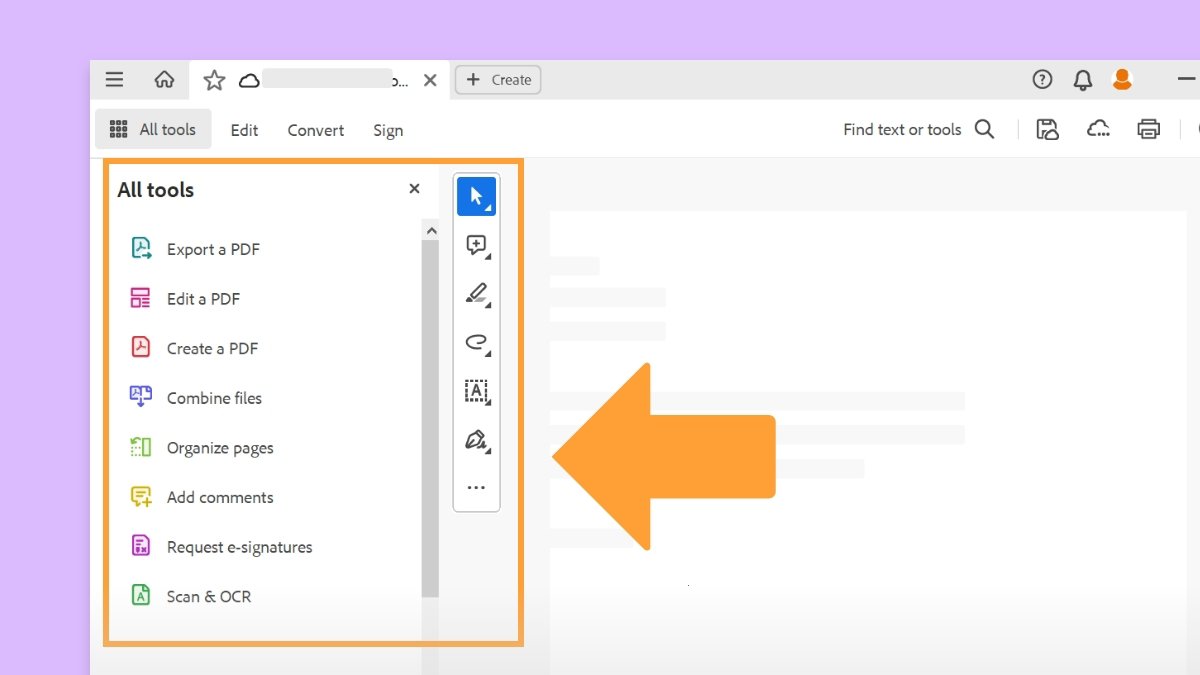Before you begin
We're rolling out a new, more intuitive product experience. If the screen shown here doesn’t match your product interface, select help for your current experience.
Before you begin
We're rolling out a new, more intuitive product experience. If the screen shown here doesn’t match your product interface, select help for your current experience.


To navigate efficiently through a PDF document in Acrobat Reader, you have various options. Here are the commonly used methods:
Next and Previous: The Page Navigation toolbar includes the Up and Down arrows to navigate through the pages. You can also type a page number in the interactive text box to go directly to that page.
Scroll bars: Vertical and horizontal scroll bars appear on the document pane when the entire document isn't visible. You can use the arrows or drag the scroll bars to view different pages or areas of the page.
Select & zoom toolbar: This toolbar contains buttons and controls for changing the page magnification. It allows you to adjust the zoom level for better readability.
Page thumbnails panel: To display the page thumbnails panel, select the Page Thumbnails button from the right toolbar By selecting a page thumbnail, you can jump to that page in the document pane.
If you don't see these items, select the hamburger menu ![]() > View (Windows), or View (macOS), then select Show/Hide > Side panels.
> View (Windows), or View (macOS), then select Show/Hide > Side panels.
You can navigate to the next page using the page navigation toolbar:
Select the Go to next page icon from the right page navigation toolbar.
You can navigate to the next page using the page navigation toolbar:
Select the Go to previous page icon from the right page navigation toolbar.
Navigate to the last page of your document:
(Windows) Select the hamburger menu from the upper left. Select View > Page navigation > Last page.
(macOS) Select View > Page navigation > Last page.
Navigate to a specific page in your document:
Enter the page number in the Go to a specific page number text box in the right navigation toolbar.
To retrace your viewing path or jump to bookmarked pages, you can:
Note: If you don't see the bookmarks icon in the right panel, go to the hamburger menu ![]() > View (Windows) or View (macOS), then select > Show/Hide > Side panels. Then, select Bookmarks to access bookmarks and navigate through them.
> View (Windows) or View (macOS), then select > Show/Hide > Side panels. Then, select Bookmarks to access bookmarks and navigate through them.
Depending on the PDF you open, you have to move forward through multiple pages, see different parts of the page, or change the magnification. There are many ways to navigate, but the following items are commonly used:


Automatic scrolling advances your view of the PDF at a steady rate, moving vertically down the document. If you interrupt the process by using the scroll bars to move back or forward to another page or position, automatic scrolling continues from that point forward. At the end of the PDF, automatic scrolling stops and doesn’t begin again until you choose automatic scrolling again.
To automatically scroll through a document, follow these steps:
You can find PDF pages that you viewed earlier by retracing your viewing path. It’s helpful to understand the difference between previous and next pages and previous and next views.
Select up and down arrows from the bottom toolbars in the right panel.
Or, select the hamburger menu ![]() > View (Windows) or View (macOS), then select > Page navigation > Previous view.
> View (Windows) or View (macOS), then select > Page navigation > Previous view.
To continue on your navigation path, select the hamburger menu ![]() > View (Windows) or View (macOS), then select > Page navigation > Next view.
> View (Windows) or View (macOS), then select > Page navigation > Next view.
Links can take you to another location in the current document, to other PDF documents, or to websites. Clicking a link can also open file attachments and play 3D content, movies, and sound clips. To play these media clips, you must have the appropriate hardware and software installed.
The person who created the PDF document determines what links look like in the PDF.
Unless a link was created in Acrobat using the Link tool, you must have the Create Links From URLs option selected in the General preferences for a link to work correctly.
If you open a PDF that has one or more attached files, the Attachments panel automatically opens, listing the attached files. You can open these files for viewing, edit the attachments, and save your changes, as permitted by the document authors.
If you move the PDF to a new location, the attachments automatically move with it.
In PDFs, articles are optional electronic threads that the PDF author defines within that PDF. Articles lead readers through the PDF content, jumping over pages or areas of the page that are not included in the article. It’s the same way that you skim through a traditional newspaper or magazine, following one specific story and ignoring the rest. When you read an article, the page view zooms in or out so that the current part of the article fills the screen.
When reading an article thread within a PDF, you can:
By utilizing these navigation features in Acrobat Reader, you can easily move through pages, access bookmarks, use page thumbnails, enable automatic scrolling, and follow article threads to enhance your reading experience.